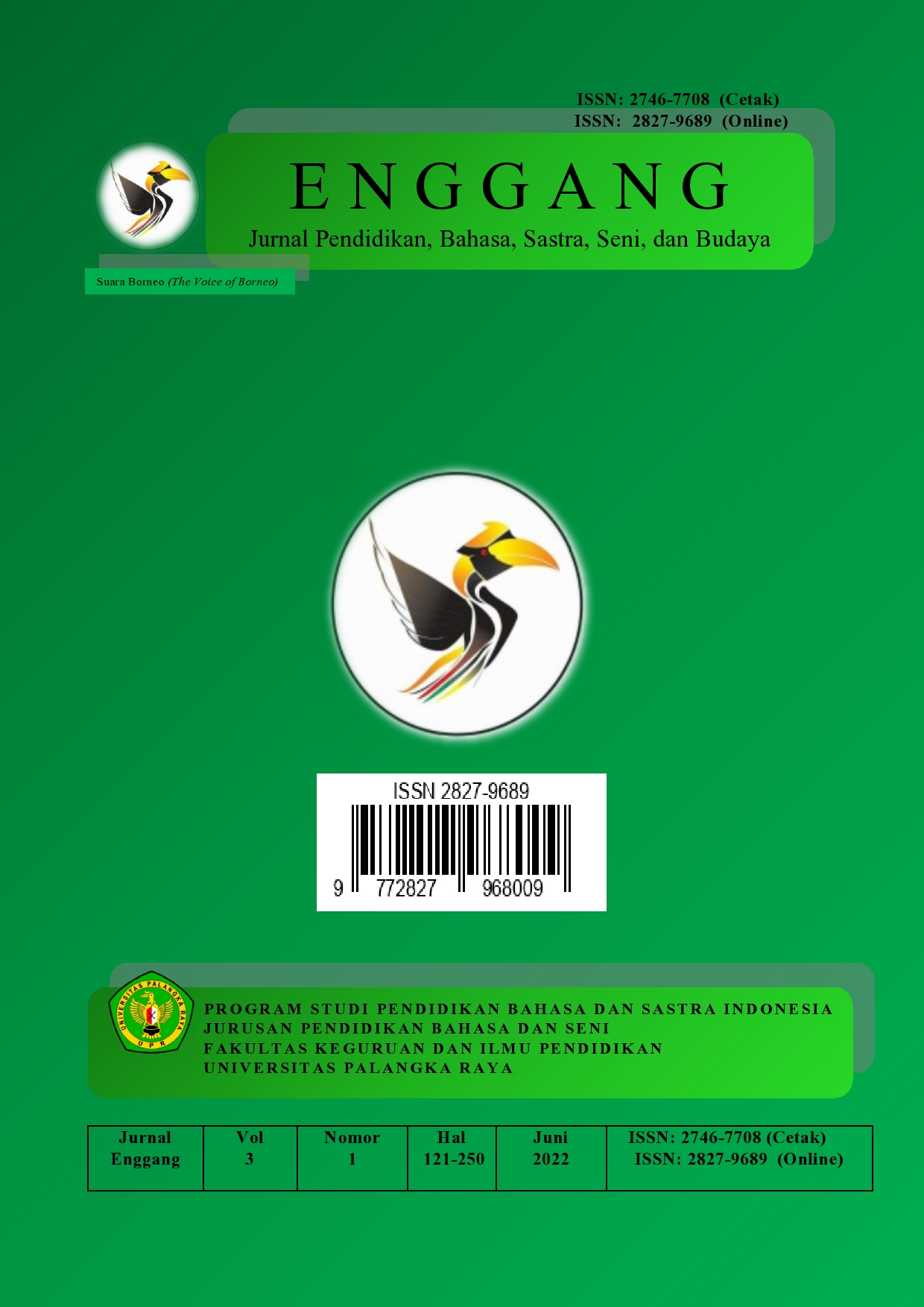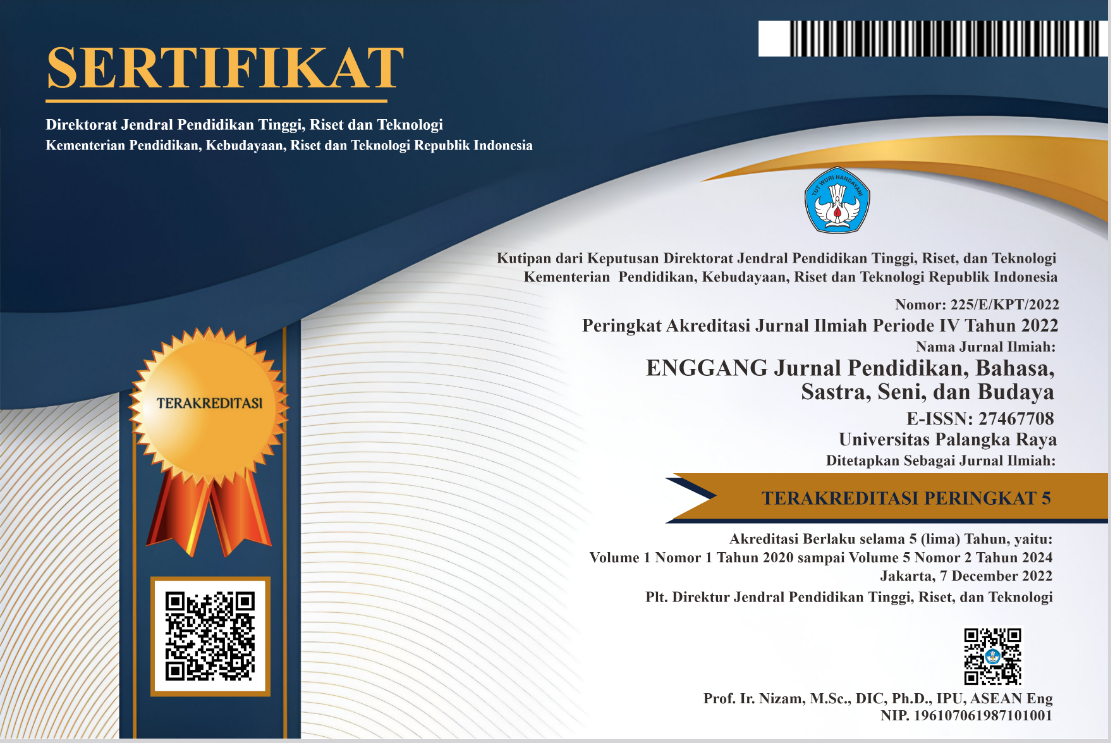Ethnic Language Maintenance Among The Maanyan Emigrants In Indonesia
DOI:
https://doi.org/10.37304/enggang.v5i2.21122Keywords:
Maanyan, Maanyan emigrants, and language maintenanceAbstract
Some of the Maanyans or the Dayak Maanyan as one of the indigenous ethnic groups in Central Kalimantan Province have emigrated from their second original native land, East Barito Regency, Central Kalimantan. They emigrated to other parts of Central Kalimantan or any other parts of Indonesia. Their basic purposes for leaving their second original native land are to look for jobs as well as to study. At their new settlement, some of the Maanyan emigrants still strongly maintain their native language by inheriting the language to their children while some others think that it is not necessary. Among the factors influencing the ethnic language maintenance among the Maanyan emigrants are ethnic identity, the attitudes of the parents, intra-and inter-ethnic group communication, the need for telling or saying something secret, the establishment of Dusmala in a number of capital cities, and the Indonesian government policy on ethnic language maintenance.
Downloads
References
Abdullah, I. (1999). Bahasa Nusantara: Posisi dan penggunaannya menjelang abad ke-21. Yogyakarta: Pustaka Pelajar.
Berahimma, A. M., & Fiddienika, A. (2024). Pemertahanan bahasa perantau di Kota Makassar Sulawesi Selatan. Jurnal Pustaka (JBT) Pendidikan Bahasa dan Sastera Indonesia, Universitas Balikpapan, 7(1), Juni 2024.
Brown, H. D. (1987). Principles of language learning and teaching (2nd ed.). Englewood Cliffs, NJ: Prentice-Hall, Inc.
Crystal, D. (2000). Language death. Cambridge: Cambridge University Press.
Fishman, J. A. (1972). The sociology of language: An interdisciplinary social science approach to language in society. Massachusetts: Newbury House Publishers.
Gumperz, J. J., & Hymes, D. (Eds.). (1972). Directions in sociolinguistics. New York: Holt, Rinehart, and Winston.
Kipp, S., et al. (1995). Immigration and Australia’s language resources. Canberra: Australian Government Publishing Services.
Nababan, P. W. J. (1979). Sosiolinguistik selayang pandang. Jakarta: Proyek Pengembangan Bahasa dan Sastra Indonesia dan Daerah, Pusat Pembinaan dan Pengembangan Bahasa, Departemen Pendidikan dan Kebudayaan.
Sallabank, J. (2013). Attitudes to endangered languages. Cambridge: Cambridge University Press.
Schumann, J. H. (1978). The pidginization process: A model of second language acquisition. Rowley, MA: Newbury House.
Supriyadi, A. (2020). Perubahan, pergeseran, dan pemertahanan bahasa. Jurnal Cakrawala Bahasa: Jurnal Ilmiah Prodi Pendidikan Bahasa Inggris, Edisi Oktober. ISSN: 2089-6115.
Tando, H. (1999). Kepunahan bahasa-bahasa daerah: Faktor dan implikasi etnolinguistis. Jurnal Masyarakat dan Budaya, 11(2), 284–290.
Wardhaugh, R. (1986). An introduction to sociolinguistics. Oxford: Basil Blackwell.
Widen, K. (2002). A study on the terms of address among the Maanyan (Unpublished research report). University of Palangka Raya.
Widen, K. (2003). The impacts of globalization on Dayak identity (Unpublished doctoral dissertation). La Trobe University, Melbourne.
Widen, K. (2003). The lexical similarities of Minang language into Kudangan language (Unpublished research report). University of Palangka Raya.













